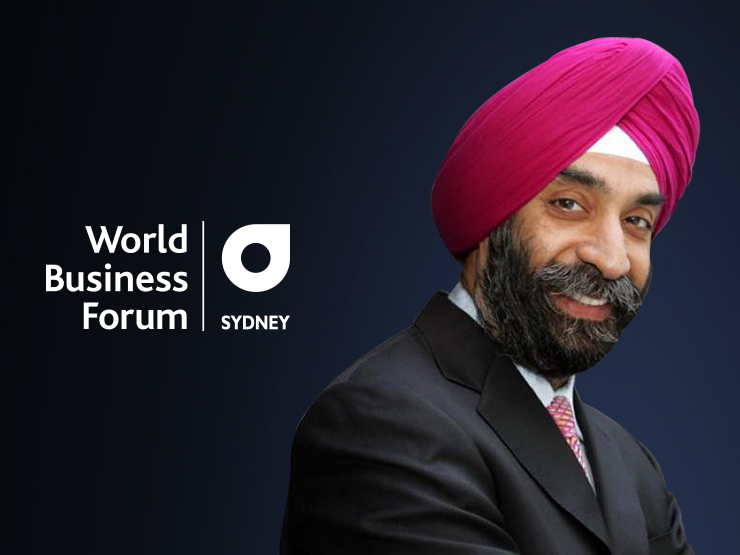On a seasonally adjusted basis, the NAB Online Retail Sales Index recorded a drop in growth in July


Insight
“It’s not called failing any more, it’s called learning”: Mohanbir Sawhney, Professor at the Kellogg School of Management, details the concept of agile innovation and shares three ways in which businesses can transform to become agile innovators themselves.

Global scholar and consultant Mohanbir Sawhney on the principles of agile innovation, its key building blocks and how business leaders can transform their own organisations into agile innovators.
Agile innovation – being nimble and collaborative to create better results – began and has largely stayed with start-ups. But how do we take it to a corporate environment? The answer lies in being agile – and it’s as much a mindset as a methodology.
There’s an acronym from the military that describes our world today, and that is VUCA. Standing for Volatility, Uncertainty, Complexity and Ambiguity, it denotes an environment of extreme change: events moving at a faster speed and change accelerating. As technology builds on technology, we live in a world where a 13-year-old can create an app and generate millions in revenue – because the network and systems are all there.
The world is also more uncertain – it’s harder to predict. It’s more complex – there’s more connectivity. And it’s more ambiguous – there’s a hazy connection between cause and effect.
How does this link to innovation? Because agility is a strategic response to VUCA; you cannot predict your way out of our world today, you need to work at it, experiment and respond. If the old paradigm was slow and expensive, what we now need to do is innovate on innovation. Traditional innovation is broken: it’s slow, expensive and rigid.
Agile innovation seeks to improve the speed, predictability and adaptability of innovation.
It’s moving from a ‘big project’ focus to iterative planning and testing with small, collaborative teams. I like to talk about the death of bigness. Instead, agile innovation is about the small.
It’s also about not just speed but intelligent movement – it’s speed with direction.
In my view, there are three clear paths to agile innovation:
Agile innovation is about structure, process and people. Structure and process are so important – innovation is a deviant act and organisations traditionally pay people to perform, not innovate. So we need different KPIs and different structures to answer this. But people are also key. Because the bad news is the smartest people in the world don’t work for you. They’re outside. And you need to tap into those people outside your organisation.
Let’s talk about the first point, the notion of agility itself.
Agile came from Silicon Valley about 20 years ago and was designed to bring products to market faster in the face of uncertainty. While traditional product design was what’s termed a waterfall process – a one-way process where change was the enemy – agile thinking changed this completely.
Using sprint sessions of just two to four weeks (versus, say, 52) projects are chunked down so there is no one large project but instead a series of small projects. Small groups come together on a project at once, with small packets of work delivered quickly, by teams that self-manage.
The thinking is: ‘I accept that I do not know the future. But I will learn as I go along and I’ll adapt as I go along.’
Form of course follows function. If you want to be agile, you have to create an agile workspace. I’ve been to Facebook’s office and it’s not an office, it’s a warehouse. It’s how they work, in this collaborative workspace. Their boardroom is glass; that’s transparency in action. Change the way your workspace looks and it sends a clear message that ‘we are thinking differently
The problem with many businesses today is by nature they are not set up to innovate. There’s two conflicting ideas here: exploitation and exploration.
Exploitation is a fortress; you build a fort around your business. Designed around execution, it’s based on performance, efficiency, effectiveness and productivity. That’s the core of your engine. Exploration on the other hand is about disrupting what you’re trying to do. It’s designed around new frontiers, new opportunities, new markets and new customers. The two don’t intuitively work together; taking risks and experimenting are traditionally antithetical to performance.
Yet there is a solution, and that is to construct an opportunity-based and flexible organisation primed around opportunities. For it to succeed, it should be outside the business structure initially, report straight to the CEO, be led with a senior executive and be staffed by high potential talent. In time, you’ll need to tether it back to the mothership or it will become just another silo. But give it time.
The third key way to become an agile innovator is be collaborative.
That’s the idea behind ‘collaborative innovation’ – moving innovation from an invention model to a connected one. It harnesses the power of networks and communities to build reach, get more ideas, increase speed and improve outcomes. It’s about turbocharging … and the result becomes ‘My company is no longer a silo that exists in a vacuum but one that exists in an innovation ecosystem’. That’s government agencies, universities, joint ventures, science bodies, NGOs. It’s a sophisticated ecosystem that recognises we are going to have to collaborate to drive innovation.
How then do organisations become agile? I suggest they embrace three key ideas.
© National Australia Bank Limited. ABN 12 004 044 937 AFSL and Australian Credit Licence 230686.